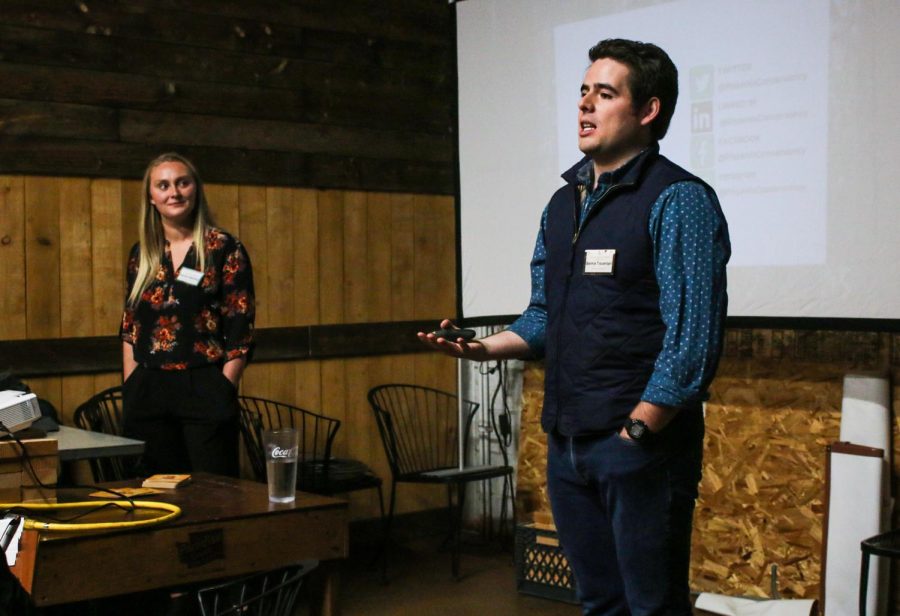Group gives update on restoration project
Phoenix Conservancy completes a baseline inventory on 3.2 acres
Bernardo Traversari, Phoenix Conservancy Palouse community outreach coordinator, says their main goal is to create an organic learning space for the community on Sunday evening in the Paradise Creek Brewery Trailside Taproom.
October 28, 2019
The Phoenix Conservancy held a meeting on Sunday to discuss its plan to restore about 3.2 acres of Conservation Park by getting rid of invasive species and making the area a learning space.
Ben Stone, executive director of the Phoenix Conservancy, said the mission of the group is to restore endangered ecosystems globally for the communities that depend on them.
He said that several problems ecosystems in Pullman face can be solved by increasing their biodiversity.
Lauren Beckley, Palouse Prairie project manager, said the Phoenix Conservancy wants the park to create natural ecosystem processes without the interference of people.
Beckley said the Phoenix Conservancy completed a baseline inventory of the 3.2 acres by cataloging the vegetation in the area, which led them to find that invasive species make up 90 percent of the vegetation in the Phoenix Conservancy’s section of the park.
Whitetop is the most dominant invasive species, with cheatgrass being second dominant, she said.
After they take out the invasive species, the Phoenix Conservancy will plant grass seeds, pollinator seeds and native plants, she said.
In the spring, the Phoenix Conservancy will be partnering with WSU soil scientists to test the soil properties of the park, Beckley said.
Bernardo Traversari, Palouse community outreach coordinator, said Conservation Park is a community-oriented project.
The Phoenix Conservancy will work to make the park available to the community as an outdoor recreation site, Traversari said.
The goal for Conservation Park is to make it into an organic learning space for the community to use for education and recreational purposes. They hope people can become familiar with the natural heritage of the region, he said.
Different members of the Phoenix Conservancy are working to create programs tailored for students in schools around Pullman so that they can take advantage of the park, Traversari said.
The park is in what was the city’s old plant nursery site before it was taken over by WSU master students and the school of the environment, he said.
After the students completed their thesis project, various organizations took over the park. In 2017, the Phoenix Conservancy took over the park to eradicate invasive species, Traversari said.
They also hope to create different community events so people can help with the restoration work, Traversari said.
There will be various training events to teach people how to identify invasive species in the park and plant native plants, he said.









